Premium Only Content
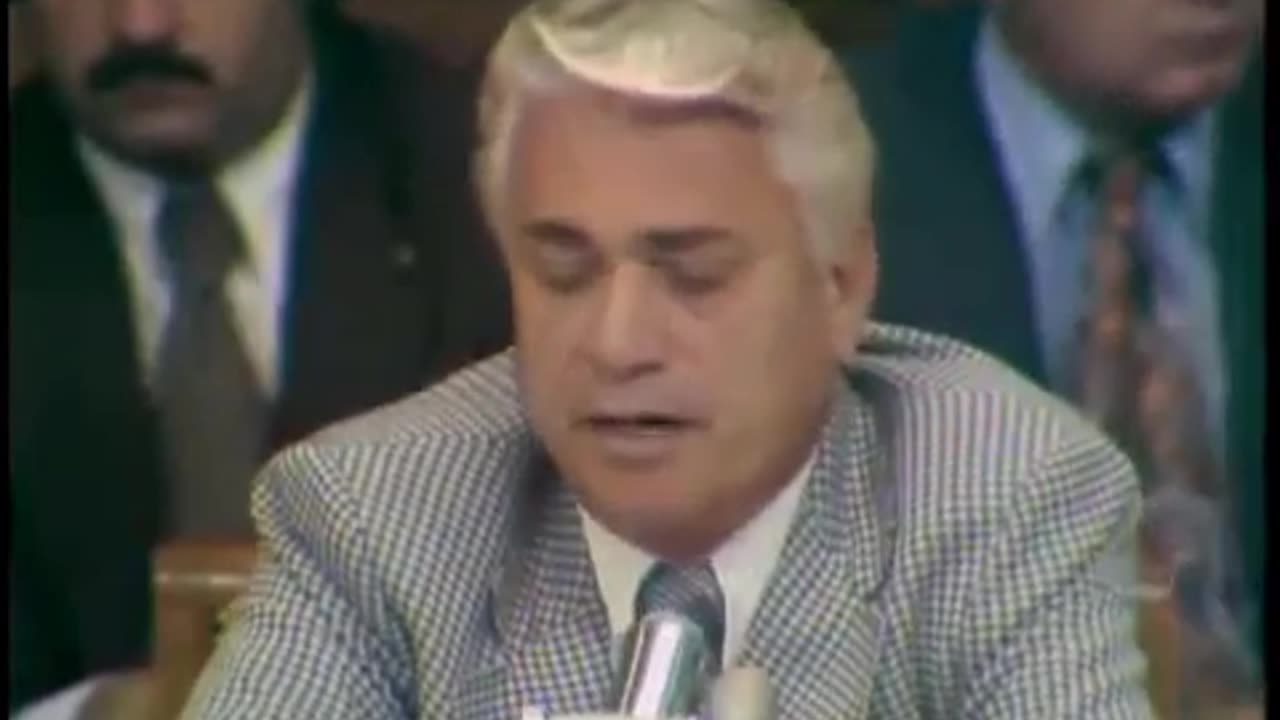
Nixon Impeachment Hearings Day 6 (1974-07-29)
The dark side of history: https://thememoryhole.substack.com/
Nixon was inaugurated as president on January 20, 1969, sworn in by his onetime political rival, Chief Justice Earl Warren. Pat Nixon held the family Bibles open at Isaiah 2:4, which reads, "They shall beat their swords into plowshares, and their spears into pruning hooks." In his inaugural address, which received almost uniformly positive reviews, Nixon remarked that "the greatest honor history can bestow is the title of peacemaker"[141]—a phrase that found a place on his gravestone.[142] He spoke about turning partisan politics into a new age of unity:
In these difficult years, America has suffered from a fever of words; from inflated rhetoric that promises more than it can deliver; from angry rhetoric that fans discontents into hatreds; from bombastic rhetoric that postures instead of persuading. We cannot learn from one another until we stop shouting at one another, until we speak quietly enough so that our words can be heard as well as our voices.[143]
Foreign policy
Main article: Foreign policy of the Richard Nixon administration
China
Main article: 1972 visit by Richard Nixon to China
President Nixon shakes hands with Chinese Premier Zhou Enlai upon arriving in Beijing, 1972.
Nixon and Zhou Enlai toast during Nixon's 1972 visit to China.
Nixon laid the groundwork for his overture to China before he became president, writing in Foreign Affairs a year before his election: "There is no place on this small planet for a billion of its potentially most able people to live in angry isolation."[144] Among the reasons that Nixon sought to improve relations with China was in the hope of weakening the Soviet Union and decreasing China's support to the North in the Vietnam War.[145] Nixon ultimately used the idea of gaining leverage against the Soviet Union through relations with China to obtain the support of key conservative figures including Barry Goldwater and Ronald Reagan.[146]
Assisting him in pursuing relations with China was Henry Kissinger, Nixon's National Security Advisor and future Secretary of State. They collaborated closely, bypassing Cabinet officials. With relations between the Soviet Union and China at a nadir—border clashes between the two took place during Nixon's first year in office—Nixon sent private word to the Chinese that he desired closer relations. A breakthrough came in early 1971, when Chinese Communist Party (CCP) chairman Mao Zedong invited a team of American table tennis players to visit China and play against top Chinese players. Nixon followed up by sending Kissinger to China for clandestine meetings with Chinese officials.[144] On July 15, 1971, with announcements from Washington and Beijing, it was learned that the President would visit China the following February.[147] The secrecy had allowed both sets of leaders time to prepare the political climate in their countries for the visit.[148]
In February 1972, Nixon and his wife traveled to China after Kissinger briefed Nixon for over 40 hours in preparation.[149] Upon touching down, the President and First Lady emerged from Air Force One and were greeted by Chinese Premier Zhou Enlai. Nixon made a point of shaking Zhou's hand, something which then-Secretary of State John Foster Dulles had refused to do in 1954 when the two met in Geneva.[150] More than a hundred television journalists accompanied the president. On Nixon's orders, television was strongly favored over printed publications, as Nixon felt that the medium would capture the visit much better than print. It also gave him the opportunity to snub the print journalists he despised.[150]
Mao Zedong and Nixon
Nixon and Kissinger immediately met for an hour with CCP Chairman Mao Zedong and Premier Zhou at Mao's official private residence, where they discussed a range of issues.[151] Mao later told his doctor that he had been impressed by Nixon's forthrightness, unlike the leftists and the Soviets.[151] He said he was suspicious of Kissinger,[151] though the National Security Advisor referred to their meeting as his "encounter with history".[150] A formal banquet welcoming the presidential party was given that evening in the Great Hall of the People. The following day, Nixon met with Zhou; the joint communique following this meeting recognized Taiwan as a part of China and looked forward to a peaceful solution to the problem of reunification.[152] When not in meetings, Nixon toured architectural wonders, including the Forbidden City, the Ming tombs, and the Great Wall.[150] Americans took their first glance into everyday Chinese life through the cameras that accompanied Pat Nixon, who toured the city of Beijing and visited communes, schools, factories, and hospitals.[150]
The visit ushered in a new era of US–China relations.[130] Fearing the possibility of a US–China alliance, the Soviet Union yielded to pressure for détente with the United States.[153] This was one component of triangular diplomacy.[154]
Vietnam War
Main articles: Vietnam War, Vietnamization, and Role of the United States in the Vietnam War
Nixon delivers an address to the nation about the incursion in Cambodia.
When Nixon took office, about 300 American soldiers were dying each week in Vietnam,[155] and the war was widely unpopular in the United States, the subject of ongoing violent protests. The Johnson administration had offered to suspend bombing unconditionally in exchange for negotiations, but to no avail. According to Walter Isaacson, Nixon concluded soon after taking office that the Vietnam War could not be won, and he was determined to end it quickly.[156] He sought an arrangement that would permit American forces to withdraw while leaving South Vietnam secure against attack.[157]
Nixon approved a secret B-52 carpet bombing campaign of North Vietnamese and Khmer Rouge positions in Cambodia beginning in March 1969 and code-named Operation Menu, without the consent of Cambodian leader Norodom Sihanouk.[158][159][160] In mid-1969, Nixon began efforts to negotiate peace with the North Vietnamese, sending a personal letter to their leaders, and peace talks began in Paris. Initial talks did not result in an agreement,[161] and in May 1969 he publicly proposed to withdraw all American troops from South Vietnam provided North Vietnam did so, and suggesting South Vietnam hold internationally supervised elections with Viet Cong participation.[162]
Nixon visits American troops in South Vietnam, July 30, 1969.
In July 1969, Nixon visited South Vietnam, where he met with his U.S. military commanders and President Nguyễn Văn Thiệu. Amid protests at home demanding an immediate pullout, he implemented a strategy of replacing American troops with Vietnamese troops, known as "Vietnamization".[130] He soon instituted phased U.S. troop withdrawals,[163] but also authorized incursions into Laos, in part to interrupt the Ho Chi Minh trail passing through Laos and Cambodia and used to supply North Vietnamese forces. In March 1970, at the explicit request of the Khmer Rouge and negotiated by Pol Pot's then-second-in-command, Nuon Chea, North Vietnamese troops launched an offensive and overran much of Cambodia.[164] Nixon announced the ground invasion of Cambodia on April 30, 1970, against North Vietnamese bases in the east of the country,[165] and further protests erupted against perceived expansion of the conflict, which resulted in Ohio National Guardsmen killing four unarmed students at Kent State University.[166] Nixon's responses to protesters included an impromptu, early morning meeting with them at the Lincoln Memorial on May 9, 1970.[167][168][169] Nixon's campaign promise to curb the war, contrasted with the escalated bombing, led to claims that Nixon had a "credibility gap" on the issue.[163] It is estimated that between 50,000 and 150,000 people were killed during the bombing of Cambodia between 1970 and 1973.[159]
In 1971, excerpts from the "Pentagon Papers", which had been leaked by Daniel Ellsberg, were published by The New York Times and The Washington Post. When news of the leak first appeared, Nixon was inclined to do nothing; the Papers, a history of United States' involvement in Vietnam, mostly concerned the lies of prior administrations and contained few real revelations. He was persuaded by Kissinger that the Papers were more harmful than they appeared, and the President tried to prevent publication, but the Supreme Court ruled in favor of the newspapers.[170]
As U.S. troop withdrawals continued, conscription was phased out by 1973, and the armed forces became all-volunteer.[171] After years of fighting, the Paris Peace Accords were signed at the beginning of 1973. The agreement implemented a cease fire and allowed for the withdrawal of remaining American troops without requiring withdrawal of the 160,000 North Vietnam Army regulars located in the South.[172] Once American combat support ended, there was a brief truce, before fighting resumed, and North Vietnam conquered South Vietnam in 1975.[173]
Latin American policy
See also: U.S. intervention in Chile § 1973 coup, and Operation Condor
Nixon with Mexican president Gustavo Díaz Ordaz (to his right); motorcade in San Diego, California, September 1970
Nixon had been a firm supporter of Kennedy during the 1961 Bay of Pigs Invasion and 1962 Cuban Missile Crisis. On taking office in 1969, he stepped up covert operations against Cuba and its president, Fidel Castro. He maintained close relations with the Cuban-American exile community through his friend, Bebe Rebozo, who often suggested ways of irritating Castro. The Soviets and Cubans became concerned, fearing Nixon might attack Cuba and break the understanding between Kennedy and Khrushchev that ended the missile crisis. In August 1970, the Soviets asked Nixon to reaffirm the understanding, which he did, despite his hard line against Castro. The process was not completed before the Soviets began expanding their base at the Cuban port of Cienfuegos in October 1970. A minor confrontation ensued, the Soviets stipulated they would not use Cienfuegos for submarines bearing ballistic missiles, and the final round of diplomatic notes were exchanged in November.[174]
The election of Marxist candidate Salvador Allende as President of Chile in September 1970 spurred a vigorous campaign of covert opposition to him by Nixon and Kissinger.[175]: 25 This began by trying to convince the Chilean congress to confirm Jorge Alessandri as the winner of the election, and then messages to military officers in support of a coup.[175] Other support included strikes organized against Allende and funding for Allende opponents. It was even alleged that "Nixon personally authorized" $700,000 in covert funds to print anti-Allende messages in a prominent Chilean newspaper.[175]: 93 Following an extended period of social, political, and economic unrest, General Augusto Pinochet assumed power in a violent coup d'état on September 11, 1973; among the dead was Allende.[176]
Soviet Union
Nixon with Brezhnev during the Soviet leader's trip to the U.S., 1973
Nixon used the improving international environment to address the topic of nuclear peace. Following the announcement of his visit to China, the Nixon administration concluded negotiations for him to visit the Soviet Union. The President and First Lady arrived in Moscow on May 22, 1972, and met with Leonid Brezhnev, the General Secretary of the Communist Party; Alexei Kosygin, the Chairman of the Council of Ministers; and Nikolai Podgorny, the Chairman of the Presidium of the Supreme Soviet, among other leading Soviet officials.[177]
Nixon engaged in intense negotiations with Brezhnev.[177] Out of the summit came agreements for increased trade and two landmark arms control treaties: SALT I, the first comprehensive limitation pact signed by the two superpowers,[130] and the Anti-Ballistic Missile Treaty, which banned the development of systems designed to intercept incoming missiles. Nixon and Brezhnev proclaimed a new era of "peaceful coexistence". A banquet was held that evening at the Kremlin.[177]
Nixon and Kissinger planned to link arms control to détente and to the resolution of other urgent problems through what Nixon called "linkage." David Tal argues:
The linkage between strategic arms limitations and outstanding issues such as the Middle East, Berlin and, foremost, Vietnam thus became central to Nixon's and Kissinger's policy of détente. Through the employment of linkage, they hoped to change the nature and course of U.S. foreign policy, including U.S. nuclear disarmament and arms control policy, and to separate them from those practiced by Nixon's predecessors. They also intended, through linkage, to make U.S. arms control policy part of détente ... His policy of linkage had in fact failed. It failed mainly because it was based on flawed assumptions and false premises, the foremost of which was that the Soviet Union wanted strategic arms limitation agreement much more than the United States did.[178]
Seeking to foster better relations with the United States, China and the Soviet Union both cut back on their diplomatic support for North Vietnam and advised Hanoi to come to terms militarily.[179] Nixon later described his strategy:
I had long believed that an indispensable element of any successful peace initiative in Vietnam was to enlist, if possible, the help of the Soviets and the Chinese. Though rapprochement with China and détente with the Soviet Union were ends in themselves, I also considered them possible means to hasten the end of the war. At worst, Hanoi was bound to feel less confident if Washington was dealing with Moscow and Beijing. At best, if the two major Communist powers decided that they had bigger fish to fry, Hanoi would be pressured into negotiating a settlement we could accept.[180]
In 1973, Nixon encouraged the Export-Import Bank to finance in part a trade deal with the Soviet Union in which Armand Hammer's Occidental Petroleum would export phosphate from Florida to the Soviet Union, and import Soviet ammonia. The deal, valued at $20 billion over 20 years, involved the construction of two major Soviet port facilities at Odessa and Ventspils,[181][182][183] and a pipeline connecting four ammonia plants in the greater Volga region to the port at Odessa.[183] In 1973, Nixon announced his administration was committed to seeking most favored nation trade status with the USSR,[184] which was challenged by Congress in the Jackson-Vanik Amendment.[185]
During the previous two years, Nixon had made considerable progress in U.S.–Soviet relations, and he embarked on a second trip to the Soviet Union in 1974.[186] He arrived in Moscow on June 27 to a welcome ceremony, cheering crowds, and a state dinner at the Grand Kremlin Palace that evening.[186] Nixon and Brezhnev met in Yalta, where they discussed a proposed mutual defense pact, détente, and MIRVs. Nixon considered proposing a comprehensive test-ban treaty, but he felt he would not have time to complete it during his presidency.[186] There were no significant breakthroughs in these negotiations.[186]
Middle Eastern policy
Nixon with Israeli Prime Minister Golda Meir, June 1974.
Nixon with Israeli Prime Minister Golda Meir, June 1974
Nixon with President Anwar Sadat of Egypt, June 1974
As part of the Nixon Doctrine, the U.S. avoided giving direct combat assistance to its allies and instead gave them assistance to defend themselves. During the Nixon administration, the U.S. greatly increased arms sales to the Middle East, particularly Israel, Iran and Saudi Arabia.[187] The Nixon administration strongly supported Israel, an American ally in the Middle East, but the support was not unconditional. Nixon believed Israel should make peace with its Arab neighbors and that the U.S. should encourage it. The president believed that—except during the Suez Crisis—the U.S. had failed to intervene with Israel, and should use the leverage of the large U.S. military aid to Israel to urge the parties to the negotiating table. The Arab-Israeli conflict was not a major focus of Nixon's attention during his first term—for one thing, he felt that no matter what he did, American Jews would oppose his reelection.[a]
On October 6, 1973, an Arab coalition led by Egypt and Syria, supported with arms and materiel by the Soviet Union, attacked Israel in the Yom Kippur War. Israel suffered heavy losses and Nixon ordered an airlift to resupply Israeli losses, cutting through inter-departmental squabbles and bureaucracy and taking personal responsibility for any response by Arab nations. More than a week later, by the time the U.S. and Soviet Union began negotiating a truce, Israel had penetrated deep into enemy territory. The truce negotiations rapidly escalated into a superpower crisis; when Israel gained the upper hand, Egyptian President Sadat requested a joint U.S.–USSR peacekeeping mission, which the U.S. refused. When Soviet Premier Brezhnev threatened to unilaterally enforce any peacekeeping mission militarily, Nixon ordered the U.S. military to DEFCON3,[188] placing all U.S. military personnel and bases on alert for nuclear war. This was the closest the world had come to nuclear war since the Cuban Missile Crisis. Brezhnev backed down as a result of Nixon's actions.[189]
Because Israel's victory was largely due to U.S. support, the Arab OPEC nations retaliated by refusing to sell crude oil to the U.S., resulting in the 1973 oil crisis.[190] The embargo caused gasoline shortages and rationing in the United States in late 1973, and was eventually ended by the oil-producing nations as peace in the Middle East took hold.[191]
After the war, and under Nixon's presidency, the U.S. reestablished relations with Egypt for the first time since 1967. Nixon used the Middle East crisis to restart the stalled Middle East Peace Negotiations; he wrote in a confidential memo to Kissinger on October 20:
I believe that, beyond a doubt, we are now facing the best opportunity we have had in 15 years to build a lasting peace in the Middle East. I am convinced history will hold us responsible if we let this opportunity slip by ... I now consider a permanent Middle East settlement to be the most important final goal to which we must devote ourselves.[192]
Nixon made one of his final international visits as president to the Middle East in June 1974, and became the first president to visit Israel.[193]
Domestic policy
Economy
Further information: Nixon shock and 1970s energy crisis
Nixon at the Washington Senators' 1969 Opening Day with team owner Bob Short (arms folded) and Baseball Commissioner Bowie Kuhn (hand on mouth). Nixon's aide, Major Jack Brennan, sits behind them in uniform.
At the time Nixon took office in 1969, inflation was at 4.7 percent—its highest rate since the Korean War. The Great Society had been enacted under Johnson, which, together with the Vietnam War costs, was causing large budget deficits. Unemployment was low, but interest rates were at their highest in a century.[194] Nixon's major economic goal was to reduce inflation; the most obvious means of doing so was to end the war.[194] This could not be accomplished overnight, and the U.S. economy continued to struggle through 1970, contributing to a lackluster Republican performance in the midterm congressional elections (Democrats controlled both Houses of Congress throughout Nixon's presidency).[195] According to political economist Nigel Bowles in his 2011 study of Nixon's economic record, the new president did little to alter Johnson's policies through the first year of his presidency.[196]
Nixon was far more interested in foreign affairs than domestic policies, but he believed that voters tend to focus on their own financial condition and that economic conditions were a threat to his reelection. As part of his "New Federalism" views, he proposed grants to the states, but these proposals were for the most part lost in the congressional budget process. However, Nixon gained political credit for advocating them.[195] In 1970, Congress had granted the president the power to impose wage and price freezes, though the Democratic majorities, knowing Nixon had opposed such controls throughout his career, did not expect Nixon to actually use the authority.[196] With inflation unresolved by August 1971, and an election year looming, Nixon convened a summit of his economic advisers at Camp David. Nixon's options were to limit fiscal and monetary expansionist policies that reduced unemployment or end the dollar's fixed exchange rate; Nixon's dilemma has been cited as an example of the Impossible trinity in international economics.[197][198] He then announced temporary wage and price controls, allowed the dollar to float against other currencies, and ended the convertibility of the dollar into gold.[199] Bowles points out,
by identifying himself with a policy whose purpose was inflation's defeat, Nixon made it difficult for Democratic opponents ... to criticize him. His opponents could offer no alternative policy that was either plausible or believable since the one they favored was one they had designed but which the president had appropriated for himself.[196]
Nixon's policies dampened inflation through 1972, although their aftereffects contributed to inflation during his second term and into the Ford administration.[199] Nixon's decision to end the gold standard in the United States led to the collapse of the Bretton Woods system. According to Thomas Oatley, "the Bretton Woods system collapsed so that Nixon might win the 1972 presidential election."[197]
After Nixon won re-election, inflation was returning.[200] He reimposed price controls in June 1973. The price controls became unpopular with the public and businesspeople, who saw powerful labor unions as preferable to the price board bureaucracy.[200] The controls produced food shortages, as meat disappeared from grocery stores and farmers drowned chickens rather than sell them at a loss.[200] Despite the failure to control inflation, controls were slowly ended, and on April 30, 1974, their statutory authorization lapsed.[200]
Governmental initiatives and organization
Nixon gives the 1971 State of the Union Address.
Official Nixon portrait by James Anthony Wills, c. 1984
Graph of increases in U.S. incarceration rate
Nixon advocated a "New Federalism", which would devolve power to state and local elected officials, though Congress was hostile to these ideas and enacted few of them.[201] He eliminated the Cabinet-level United States Post Office Department, which in 1971 became the government-run United States Postal Service.[202]
Nixon was a late supporter of the conservation movement. Environmental policy had not been a significant issue in the 1968 election, and the candidates were rarely asked for their views on the subject. Nixon broke new ground by discussing environmental policy in his State of the Union speech in 1970. He saw that the first Earth Day in April 1970 presaged a wave of voter interest on the subject, and sought to use that to his benefit; in June he announced the formation of the Environmental Protection Agency (EPA).[203] He relied on his domestic advisor John Ehrlichman, who favored protection of natural resources, to keep him "out of trouble on environmental issues."[204] Other initiatives supported by Nixon included the Clean Air Act of 1970 and the Occupational Safety and Health Administration (OSHA), and the National Environmental Policy Act required environmental impact statements for many Federal projects.[204][203] Nixon vetoed the Clean Water Act of 1972—objecting not to the policy goals of the legislation but to the amount of money to be spent on them, which he deemed excessive. After Congress overrode his veto, Nixon impounded the funds he deemed unjustifiable.[205]
In 1971, Nixon proposed health insurance reform—a private health insurance employer mandate,[b] federalization of Medicaid for poor families with dependent minor children,[206] and support for health maintenance organizations (HMOs).[207] A limited HMO bill was enacted in 1973.[207] In 1974, Nixon proposed more comprehensive health insurance reform—a private health insurance employer mandate[b] and replacement of Medicaid by state-run health insurance plans available to all, with income-based premiums and cost sharing.[208]
Nixon was concerned about the prevalence of domestic drug use in addition to drug use among American soldiers in Vietnam. He called for a war on drugs and pledged to cut off sources of supply abroad. He also increased funds for education and for rehabilitation facilities.[209]
As one policy initiative, Nixon called for more money for sickle-cell research, treatment, and education in February 1971[210] and signed the National Sickle Cell Anemia Control Act on May 16, 1972.[211][212][c] While Nixon called for increased spending on such high-profile items as sickle-cell disease and for a war on cancer, at the same time he sought to reduce overall spending at the National Institutes of Health.[213]
Civil rights
The Nixon presidency witnessed the first large-scale integration of public schools in the South.[214] Nixon sought a middle way between the segregationist Wallace and liberal Democrats, whose support of integration was alienating some Southern whites.[215] Hopeful of doing well in the South in 1972, he sought to dispose of desegregation as a political issue before then. Soon after his inauguration, he appointed Vice President Agnew to lead a task force, which worked with local leaders—both white and black—to determine how to integrate local schools. Agnew had little interest in the work, and most of it was done by Labor Secretary George Shultz. Federal aid was available, and a meeting with President Nixon was a possible reward for compliant committees. By September 1970, less than ten percent of black children were attending segregated schools. By 1971, however, tensions over desegregation surfaced in Northern cities, with angry protests over the busing of children to schools outside their neighborhood to achieve racial balance. Nixon opposed busing personally but enforced court orders requiring its use.[216]
Some scholars, such as James Morton Turner and John Isenberg, believe that Nixon, who had advocated for civil rights in his 1960 campaign, slowed down desegregation as president, appealing to the racial conservatism of Southern whites, who were angered by the civil rights movement. This, he hoped, would boost his election chances in 1972.[217][218]
In addition to desegregating public schools, Nixon implemented the Philadelphia Plan in 1970—the first significant federal affirmative action program.[219] He also endorsed the Equal Rights Amendment after it passed both houses of Congress in 1972 and went to the states for ratification.[220] He also pushed for African American civil rights and economic equity through a concept known as black capitalism.[221] Nixon had campaigned as an ERA supporter in 1968, though feminists criticized him for doing little to help the ERA or their cause after his election. Nevertheless, he appointed more women to administration positions than Lyndon Johnson had.[222]
Space policy
Further information: Space policy of the United States
Nixon visiting the Apollo 11 astronauts in quarantine aboard the aircraft carrier USS Hornet
After a nearly decade-long national effort, the United States won the race to land astronauts on the Moon on July 20, 1969, with the flight of Apollo 11. Nixon spoke with Neil Armstrong and Buzz Aldrin during their moonwalk. He called the conversation "the most historic phone call ever made from the White House".[223]
Nixon was unwilling to keep funding for the National Aeronautics and Space Administration (NASA) at the high level seen during the 1960s as NASA prepared to send men to the Moon. NASA Administrator Thomas O. Paine drew up ambitious plans for the establishment of a permanent base on the Moon by the end of the 1970s and the launch of a crewed expedition to Mars as early as 1981. Nixon rejected both proposals due to the expense.[224] Nixon also canceled the Air Force Manned Orbital Laboratory program in 1969, because uncrewed spy satellites were a more cost-effective way to achieve the same reconnaissance objective.[225] NASA cancelled the last three planned Apollo lunar missions to place Skylab in orbit more efficiently and free money up for the design and construction of the Space Shuttle.[226]
On May 24, 1972, Nixon approved a five-year cooperative program between NASA and the Soviet space program, culminating in the 1975 joint mission of an American Apollo and Soviet Soyuz spacecraft linking in space.[227]
-
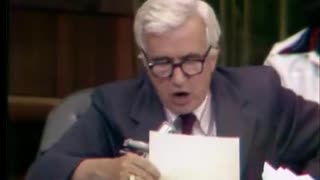 3:50:14
3:50:14
The Memory Hole
1 month agoNixon Impeachment Hearings Day 2 (1974-07-24)
620 -
 3:14:38
3:14:38
Nerdrotic
7 hours ago $9.34 earnedDisney Plus's Complete FAILURE! Fantastic Four Trailer, MCU Phase 5 Reveal | Friday Night Tights 340
86.1K13 -
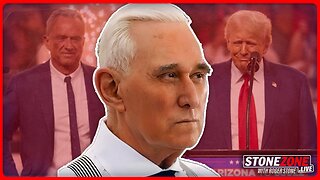 LIVE
LIVE
The StoneZONE with Roger Stone
2 hours agoWill RINOs Sink Robert F. Kennedy Jr.'s Confirmation? | The StoneZONE w/ Roger Stone
532 watching -
 LIVE
LIVE
Edge of Wonder
4 hours agoReal Biochip Implants & Havana Syndrome Exposed: Interview With Jesse Beltran
472 watching -
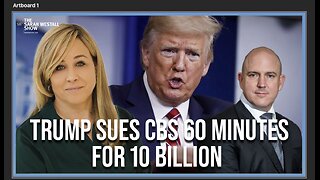 1:00:12
1:00:12
Sarah Westall
3 hours ago10 Billion Trump Lawsuit against CBS 60 Minutes, Ukraine Bio-labs and more w/ John Mark Dougan
4.05K1 -
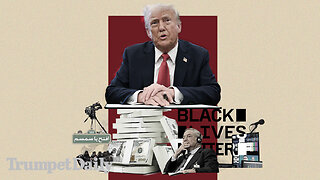
LFA TV
23 hours agoThe ‘Dictator’ Who Downsizes Government | TRUMPET DAILY 2.7.25 7pm
4.4K2 -
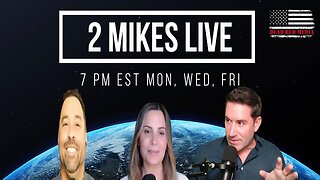 LIVE
LIVE
2 MIKES LIVE
3 hours ago2 MIKES LIVE #177 Open Mike Friday and DOGE ball!
334 watching -
 2:02:32
2:02:32
Revenge of the Cis
6 hours agoEpisode 1443: True Love
50.4K4 -
 1:02:53
1:02:53
In The Litter Box w/ Jewels & Catturd
1 day agoLOOK! SQUIRREL! | In the Litter Box w/ Jewels & Catturd – Ep. 737 – 2/7/2025
64.6K43 -
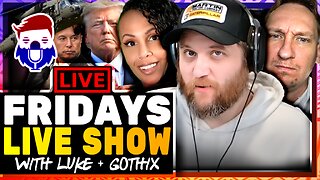 1:42:38
1:42:38
The Quartering
7 hours agoDOGE Goes Nuclear, USAID SHUTDOWN, Southern Border SECURED, Kanye West MELTDOWN & More
102K56